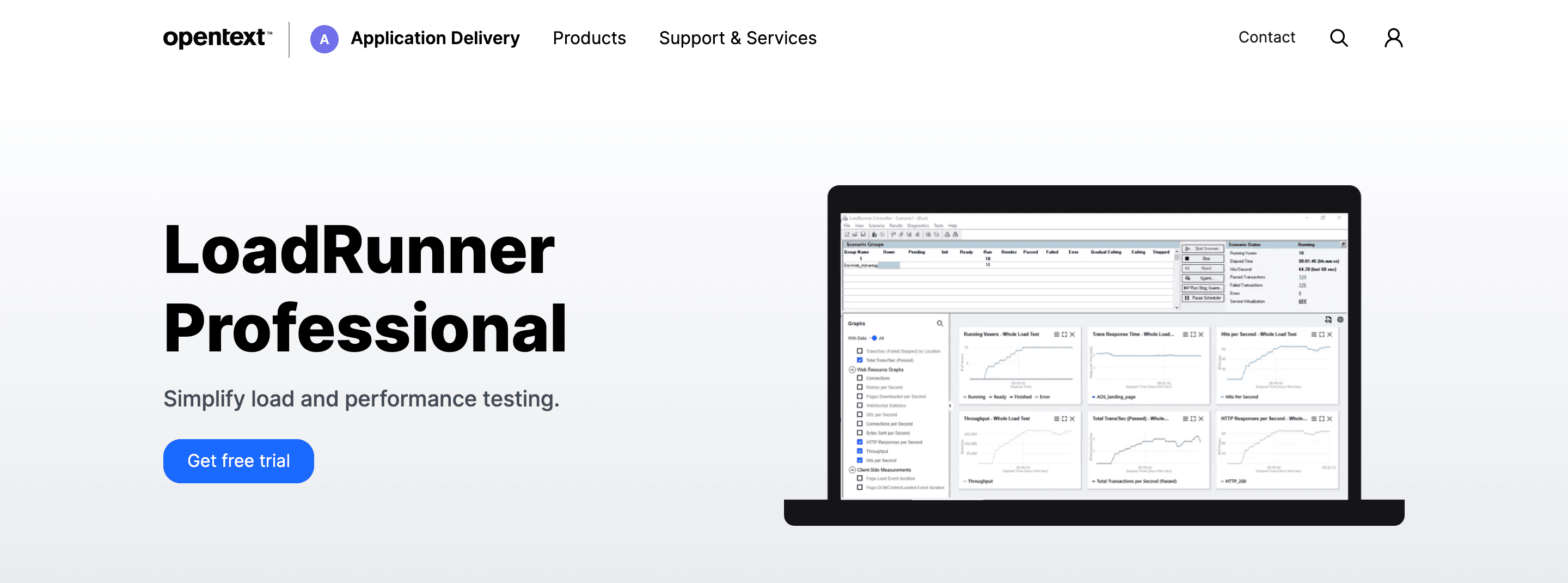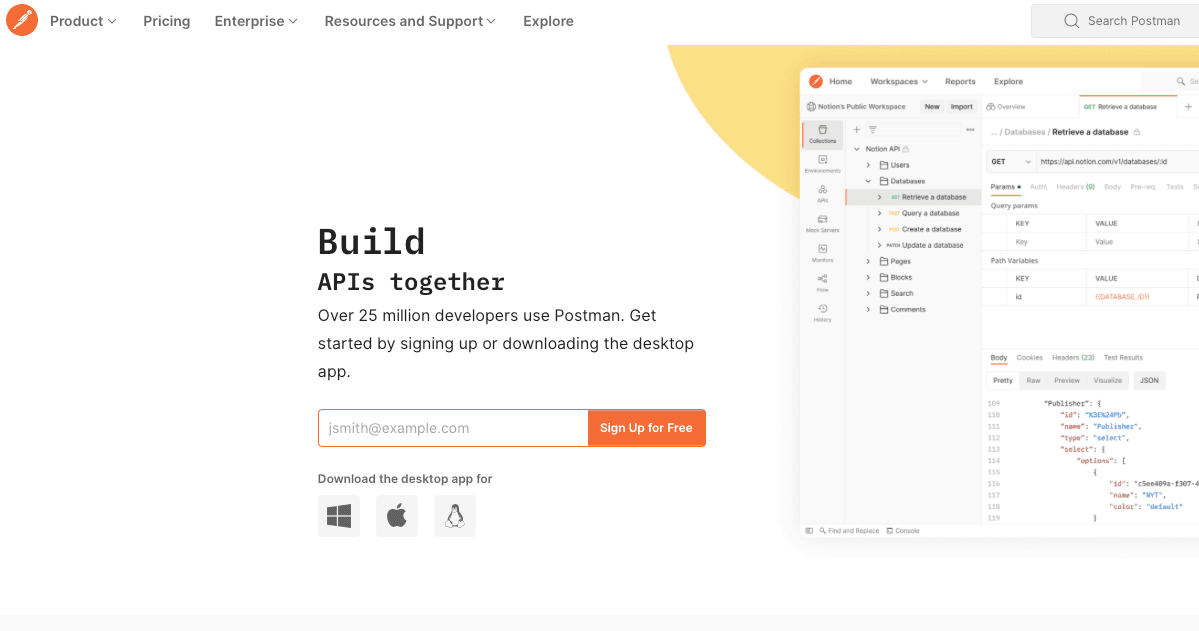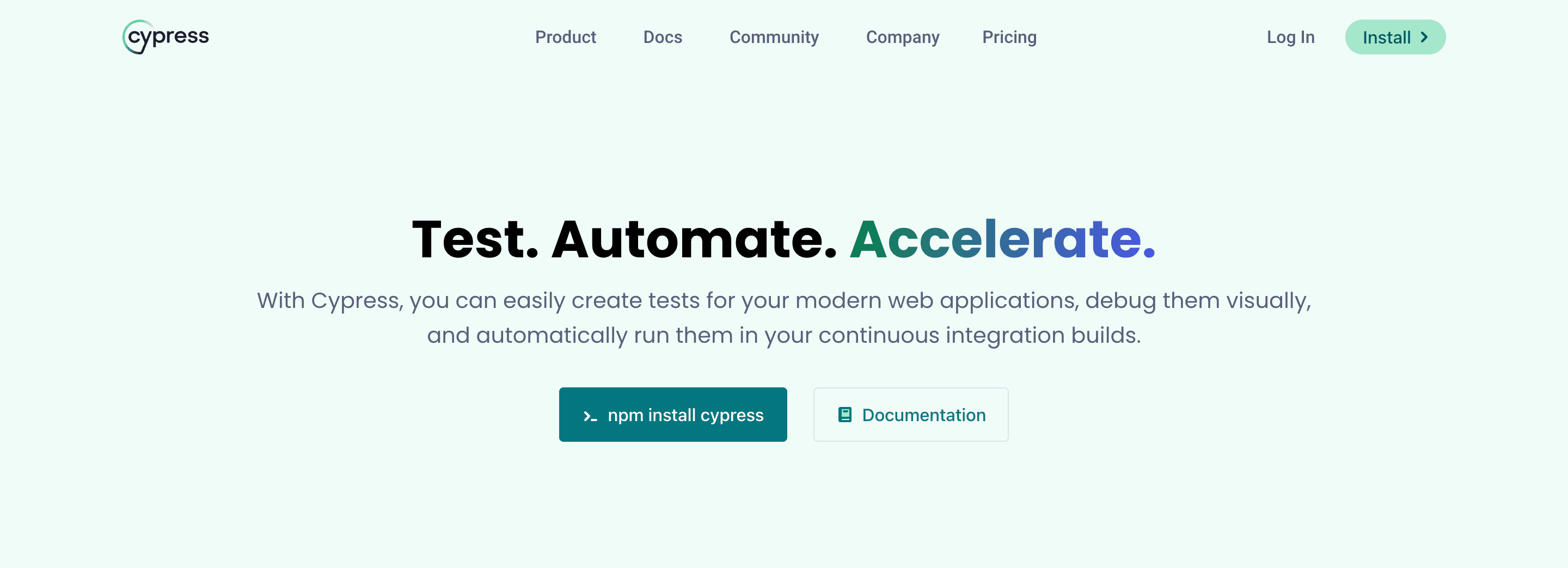- What Does QA Testing Mean?
- How Does the QA Testing Process Work?
- Types of Testing in QA
- The Purpose of QA Testing
- QA Testing Methodology
- QA Activities in the Software Development Process
- Best QA Testing Tools
- QA Testing Best Practices
- Comprehensive Test Planning
- Requirement Traceability
- Use Both Manual and Automated Testing
- Continuous Integration (CI) and Continuous Delivery (CD)
- Test Data Management
- Collaboration and Communication
- Testing Environment Management
- Test Case Design
- Defect Tracking and Reporting
- Regression Testing
- Performance Testing
- Security Testing:
- User Acceptance Testing (UAT):
- Documentation and Knowledge Sharing:
- Continuous Learning:
- Becoming a QA Tester
- QA Metrics to Track
- Defect Density
- Test Case Pass Rate
- Test Coverage
- Defect Reopen Rate
- Mean Time to Detect (MTTD)
- Mean Time to Resolve (MTTR)
- Test Execution Progress
- Defect Severity Distribution
- Test Case Pass/Fail Trends
- Automation Test Coverage
- Code Review Metrics
- Regression Test Results
- Resource Utilization
- Customer Reported Defects
- Test Environment Stability
- Test Case Maintenance
- Requirements Traceability
- The Goal of QA Testing
- In-House Testing vs. Outsourced Testing
- Usability Testing
- Exploratory Testing
- User Acceptance Testing (UAT)
- The Software Development Life Cycle and QA Testing
- Hardware and Software in QA Testing
- Black Box Testing and White Box Testing
- Conclusion
This article serves as a comprehensive guide, demystifying QA testing, and shedding light on its vital role in enhancing the quality of software. From software testing methodologies to the QA process, from manual and automated testing to quality control and best practices, we'll explore the multifaceted world of QA testing in the software development life cycle.
What Does QA Testing Mean?
At its core, Quality Assurance (QA) testing is a systematic process employed to ensure the quality, reliability, and performance of software products. It encompasses various testing methods, both manual and automated, aimed at detecting errors, bugs, or any issues that could adversely impact the software’s functionality or user experience.
Effective QA testing leads to higher customer satisfaction by ensuring that software is reliable and of high quality.
Thorough QA testing also helps protect brand reputation by preventing bugs and issues from reaching end-users.
How Does the QA Testing Process Work?
QA testing is a meticulously structured process involving numerous stages and testing methods. It commences with requirement gathering, where the testing team collaborates with stakeholders to comprehend the anticipated behavior and performance of the software. The entire testing process includes planning, designing, executing, and reporting on tests. Following this, test cases are meticulously designed and executed to unearth potential issues.
The QA process involves six key steps. First, it begins with requirement analysis, where QA Teams gather and understand project requirements. Next, they plan the testing process, outlining objectives, strategies, and timelines. Well-defined QA processes are essential for ensuring consistency and quality throughout the software development lifecycle.
Test cases are then designed, specifying steps, expected outcomes, and acceptance criteria. A suitable test environment is set up, and test data is prepared. During test execution, testers execute test cases to validate software functionality, systematically identifying defects and reporting them.
Types of Testing in QA
QA testing involves a multitude of testing types, each addressing specific aspects of software quality and functionality:
- Unit Tests: The initial phase, focused on verifying individual components' correctness early in development.
- Component Testing: Testing multiple software units together after unit testing to ensure they work correctly when integrated.
- Integration Testing: Examining the interactions between different units.
- System Testing: End-to-end testing of the complete integrated system to validate functional and non-functional requirements.
- Smoke Tests: Initial checks performed after a new release to quickly verify that basic functionality is working properly.
- Ad Hoc Testing: An informal, flexible approach to uncovering defects through improvisation and exploration without predefined scripts.
- Functional Testing: Verifying adherence to specifications.
- Performance Tests: Evaluating software efficiency, speed, and behavior under load to ensure it meets required standards.
- Security Testing: Identifying vulnerabilities and weaknesses.
- Regression Testing: Ensuring new changes don’t introduce defects.
- Acceptance Testing: Evaluating compliance with user requirements.
Manual and Automated Testing
QA testing combines manual and automated testing to optimize the quality assurance process. Manual testing involves QA teams executing pre-designed manual tests, which are documented and managed using defect-tracking systems. Automated testing employs testing tools to expedite the process, especially for repetitive or complex tests, and allows the same tests to be efficiently run across multiple platforms or configurations.
The Purpose of QA Testing
The primary purpose of QA testing is to identify and rectify issues that could jeopardize software performance or reliability. QA testing also ensures the software meets user expectations for quality and reliability. It acts as a quality control checkpoint, ensuring that the final product adheres to quality standards.
The Role of QA Testing in Software Quality Assurance
QA testing plays an indispensable role in software quality assurance. QA testers work closely with the development team to identify and resolve issues early in the process. QA testers act as gatekeepers, meticulously evaluating software against predefined criteria to guarantee it meets the highest quality standards.
QA Testing Methodology
There are several methodologies and approaches to QA testing, and the choice of methodology often depends on the specific project requirements and constraints. The selection of a QA methodology is also influenced by the stage of the development cycle and the overall software development cycle, as integrating QA activities at each phase can enhance quality and efficiency. A well-defined testing strategy is essential for guiding the QA process, ensuring that testing is aligned with project goals and covers all necessary aspects. Here are some common QA testing methodologies:
Waterfall Model:
- In the traditional Waterfall model, testing is performed after the development phase is complete.
- Testers follow a predefined set of test cases to verify the software's functionality and requirements.
- This approach is linear and sequential, making it less flexible in accommodating changes.
V-Model (Validation and Verification Model):
- The V-Model extends the Waterfall model by emphasizing the relationship between each development phase and its corresponding testing phase.
- Testing activities are planned in parallel with development, ensuring that testing aligns with the development process.
- It helps catch defects early in the development life cycle.
Agile Testing:
- Agile methodologies (e.g., Scrum, Kanban) emphasize iterative and incremental development.
- QA testers work closely with developers and stakeholders to continuously test and validate the software.
- Testers often create test cases on the fly based on user stories and requirements, adapting to changing priorities.
- Agile testing integrates QA activities throughout the entire development process, from planning to deployment.
Exploratory Testing:
- Exploratory testing is less formal and relies on testers’ creativity and experience.
- Testers explore the software, trying to find defects without predefined test scripts.
- It’s useful for uncovering unexpected issues and evaluating the user experience.
- Ad hoc testing is another informal approach where testers use improvisation to uncover defects.
QA Activities in the Software Development Process
QA engineer activities are interwoven throughout the software development process. Key QA roles include test engineers, who create and execute test cases at various testing stages; test analysts, who focus on business requirements, test planning, and documentation; and test managers, who oversee testing strategies, allocate responsibilities, and manage the QA team structure. From the initial requirement analysis to the final user acceptance testing, QA professionals contribute to improving software quality at every step.
Best QA Testing Tools
To streamline and enhance the QA process, a variety of testing tools are available. Popular tools like Selenium, JUnit, Appium, JIRA, and LoadRunner assist in test case creation, execution, and management, significantly improving efficiency and accuracy.
Selenium

Selenium is a widely used open-source testing framework for web applications. It provides a suite of tools for automated testing of web browsers across various platforms and supports multiple programming languages. Selenium's flexibility and robustness make it a top choice for web application testing.
Jenkins

Jenkins is an open-source automation server that facilitates continuous integration and continuous delivery (CI/CD) processes. It automates the building, testing, and deployment of software, making it an essential tool for automating testing workflows and ensuring rapid software development.
Appium
Appium is an open-source tool for mobile application testing. It allows testers to automate testing of native, hybrid, and mobile web applications on iOS and Android platforms. Appium's cross-platform capabilities and support for multiple programming languages make it a valuable asset for mobile testing.
JIRA

JIRA, developed by Atlassian, is a widely used project management and issue-tracking tool that is customizable for QA testing purposes. It aids in test case management, issue tracking, and collaboration among team members, making it an essential tool for QA teams.
LoadRunner

LoadRunner, offered by Micro Focus, is a performance testing tool that evaluates how software applications perform under different loads and conditions. It helps identify bottlenecks, assess scalability, and ensure optimal software performance, particularly for web and mobile applications.
TestRail

TestRail is a test management tool that assists QA teams in organizing test cases, planning test runs, and tracking test results. It provides comprehensive test reporting and integration with various testing frameworks, making it an excellent choice for managing test documentation and execution.
Postman

Postman is a popular API testing tool that simplifies the process of testing and automating API endpoints. It offers features like creating and managing collections of API requests, running automated tests, and generating detailed reports, making it indispensable for API testing in modern software development.
Cypress

Cypress is an open-source end-to-end testing framework designed for web applications. It offers a unique real-time interactive test runner, seamless debugging capabilities, and automatic waiting for elements, making it a popular choice for modern web application testing.
Automate your tests for free
Test easier than ever with BugBug test recorder. Faster than coding. Free forever.
Get started
QA Testing Best Practices
To achieve effective QA testing, it’s essential to follow best practices that help identify and address issues early, maintain software quality, and streamline the testing process.
Clearly defining the testing scope is crucial to ensure that testing activities are aligned with project goals and stakeholder expectations.
Here are some QA testing best practices:
Effective QA software testing practices are essential for maintaining high quality standards.
Comprehensive Test Planning
Develop a well-defined test plan that outlines the scope of testing, objectives, resources, timelines, and testing strategies. A clear plan serves as a roadmap for the entire testing.
Requirement Traceability
Ensure that each test case is linked to specific requirements or user stories. This traceability helps validate that all requirements have been tested and provides transparency.
Use Both Manual and Automated Testing
Combine manual and automated testing based on the nature of the test cases. Automated testing is excellent for repetitive and regression testing, while manual testing is crucial for exploratory testing and usability assessment.
Continuous Integration (CI) and Continuous Delivery (CD)
Implement CI/CD pipelines to automate the testing and deployment process. This ensures that tests are executed consistently with every code change, promoting early defect detection.
Test Data Management
Manage test data effectively by ensuring that it is consistent, relevant, and representative of real-world scenarios. Data should be anonymized and secured to protect sensitive information.
Collaboration and Communication
Foster open communication among team members, including developers, testers, product owners, and stakeholders. Regular meetings and status updates help align everyone on testing objectives and priorities.
Testing Environment Management
Maintain a stable and representative testing environment that closely mimics the production environment. Ensure that all necessary hardware, software, and configurations are in place.
Test Case Design
Design clear and comprehensive test cases with detailed steps, expected outcomes, and acceptance criteria. Well-documented test cases are essential for reproducibility and reporting.
Defect Tracking and Reporting
Use a robust defect tracking system to document and prioritize defects. Include essential information like steps to reproduce, severity, and status. Timely reporting and resolution are critical.
Regression Testing
Implement automated regression tests to verify that new code changes do not introduce new defects or disrupt existing functionality. This ensures software stability with each release.
Before approving a software release, it is essential to ensure that all regression tests pass, confirming that the application remains reliable after recent changes.
Performance Testing
Conduct performance testing to evaluate the software’s speed, scalability, and responsiveness under different loads. Stress testing is a type of performance test that evaluates system stability and behavior under extreme or peak load conditions. Identify performance bottlenecks and optimize as needed. Performance testing also assesses non functional aspects such as scalability and reliability.
Security Testing:
- Incorporate security testing into your QA process to identify vulnerabilities and weaknesses in the software. Regularly update security testing procedures to stay ahead of emerging threats.
User Acceptance Testing (UAT):
- Involve end-users or stakeholders in UAT to ensure the software meets their expectations and business requirements before release.
Documentation and Knowledge Sharing:
- Maintain detailed documentation of test plans, test cases, and test results. Share knowledge and best practices within the QA team to enhance testing efficiency.
Continuous Learning:
- Stay updated with the latest testing methodologies, tools, and industry trends. Encourage QA professionals to pursue certifications and attend training programs to enhance their skills.
Becoming a QA Tester
For those aspiring to become QA testers, learning about QA methodologies, and testing techniques, and acquiring relevant skills is crucial. QA professionals are integral to software companies, ensuring the quality of software products before releasing them to end-users.
Quality Assurance Testing and Quality Control
Quality Assurance (QA) testing is a process that aims to improve the quality of the software, whereas Quality Control (QC) focuses on verifying that the software meets predefined quality benchmarks. QA testing prevents defects, while QC testing identifies defects that need rectification.
QA Metrics to Track
QA metrics play a pivotal role in monitoring and improving the quality of software. These metrics track various aspects of the testing process, such as defect density, test coverage, and test execution progress.
Defect Density
This metric calculates the number of defects (bugs) identified in a specific software component or module divided by the size or lines of code in that component. It provides insights into the code's quality and can help identify problematic areas.
Test Case Pass Rate
The test case pass rate measures the percentage of test cases that have passed successfully without encountering any defects. A high pass rate suggests better software quality.
Test Coverage
Test coverage assesses the percentage of the software's code that has been tested. It helps identify areas of the code that haven't been adequately tested, potentially harboring defects.
Defect Reopen Rate
This metric tracks the rate at which defects are reopened after initially being marked as resolved. A high reopen rate indicates that issues were not adequately addressed or retested.
Mean Time to Detect (MTTD)
MTTD measures the average time it takes to detect defects from the moment they are introduced into the code. A shorter MTTD suggests quicker detection and potentially lower costs for defect resolution.
Mean Time to Resolve (MTTR)
MTTR calculates the average time required to resolve defects from the moment they are detected. Reducing MTTR can improve the efficiency of the QA process.
Test Execution Progress
This metric tracks the progress of test case execution over time. It helps ensure that testing stays on schedule and can reveal any potential bottlenecks or delays.
Defect Severity Distribution
Categorizing defects by severity (e.g., critical, major, minor) allows teams to prioritize which issues should be addressed first, ensuring that critical defects are resolved promptly.
Test Case Pass/Fail Trends
Tracking pass and fail trends over multiple test cycles helps identify patterns and recurring issues. This information can guide test case refinement and test strategy adjustments.
Automation Test Coverage
For automated testing, measuring the percentage of test cases that have been automated can help assess the efficiency of test automation efforts.
Code Review Metrics
Tracking code review metrics, such as the number of code reviews conducted, the number of issues identified, and the time taken for code reviews, can help improve code quality and collaboration among development and QA teams.
Regression Test Results
Monitoring the results of regression tests helps ensure that new code changes do not introduce new defects or break existing functionality.
Resource Utilization
Tracking resource utilization, such as the time and effort spent on testing, can help optimize resource allocation and improve overall efficiency.
Customer Reported Defects
Metrics related to defects reported by customers or end-users can provide insights into real-world issues and user satisfaction. These defects can be prioritized for resolution.
Test Environment Stability
Assessing the stability and availability of the test environment ensures that testers have access to the necessary resources for testing.
Test Case Maintenance
Tracking the effort and frequency of test case updates or modifications can help ensure that test cases remain relevant and practical.
Requirements Traceability
Ensuring that each test case is linked to specific requirements or user stories helps validate that all requirements have been tested and provides transparency in the testing process.
The Goal of QA Testing
The overarching goal of QA testing is to enhance the quality of software products. It aims to identify and address issues early in the development process, ultimately leading to a more reliable and user-friendly end product.
In-House Testing vs. Outsourced Testing
Companies can choose to conduct QA testing in-house or outsource it to specialized testing firms. The decision depends on factors like project scope, budget, and resource availability.
Usability Testing
Usability testing is a crucial part of QA testing that assesses how user-friendly a software product is. It involves testing the software with representative users to gather feedback on its usability and user interface.
Exploratory Testing
Exploratory testing is an unscripted testing method where testers explore the software and use their domain knowledge to identify defects. It is particularly useful for finding unexpected issues.
User Acceptance Testing (UAT)
User Acceptance Testing (UAT) is the final testing phase where end-users validate the software's functionality and ensure it meets their requirements. It is a critical step before the software's release.
The Software Development Life Cycle and QA Testing
QA testing is an integral part of the software development life cycle (SDLC). It is present at various stages, ensuring that quality is maintained from initial design to final deployment.
Hardware and Software in QA Testing
Hardware and software are integral components of Quality Assurance (QA) testing, working together to ensure the effectiveness and reliability of the testing process. In the QA process, hardware is used to set up the testing environment, replicating the conditions in which the software will operate in the real world. This involves configuring servers, workstations, and networking devices to closely resemble the production environment.
Moreover, QA testing relies on various software tools and frameworks, including test automation tools, test management systems, and performance monitoring solutions. These software components aid in creating, executing, and analyzing test cases and results, streamlining the testing process and enhancing its efficiency.
In conclusion, the synergy between hardware and software is essential to establish realistic testing conditions, assess software performance and compatibility, ensure security, and optimize the QA testing process.
Black Box Testing and White Box Testing
Black box testing is typically used for functional testing and validating user requirements, while white box testing is used for code-level testing, such as unit testing to test individual units or functions of code, and code review. Combining both techniques can provide comprehensive test coverage and ensure the overall quality of a software application.
Conclusion
In conclusion, QA testing is a dynamic and multifaceted discipline within the realm of software development. It combines manual and automated testing methods, aligns with the software development process, and encompasses a wide array of testing types to ensure the quality, reliability, and performance of software products.
QA professionals play a pivotal role in maintaining quality standards, and their expertise is invaluable in delivering software that meets the highest quality benchmarks. By understanding the intricacies of QA testing, software companies can achieve both quality and speed in their development processes, ultimately creating superior software products.
Happy (automated) testing!



